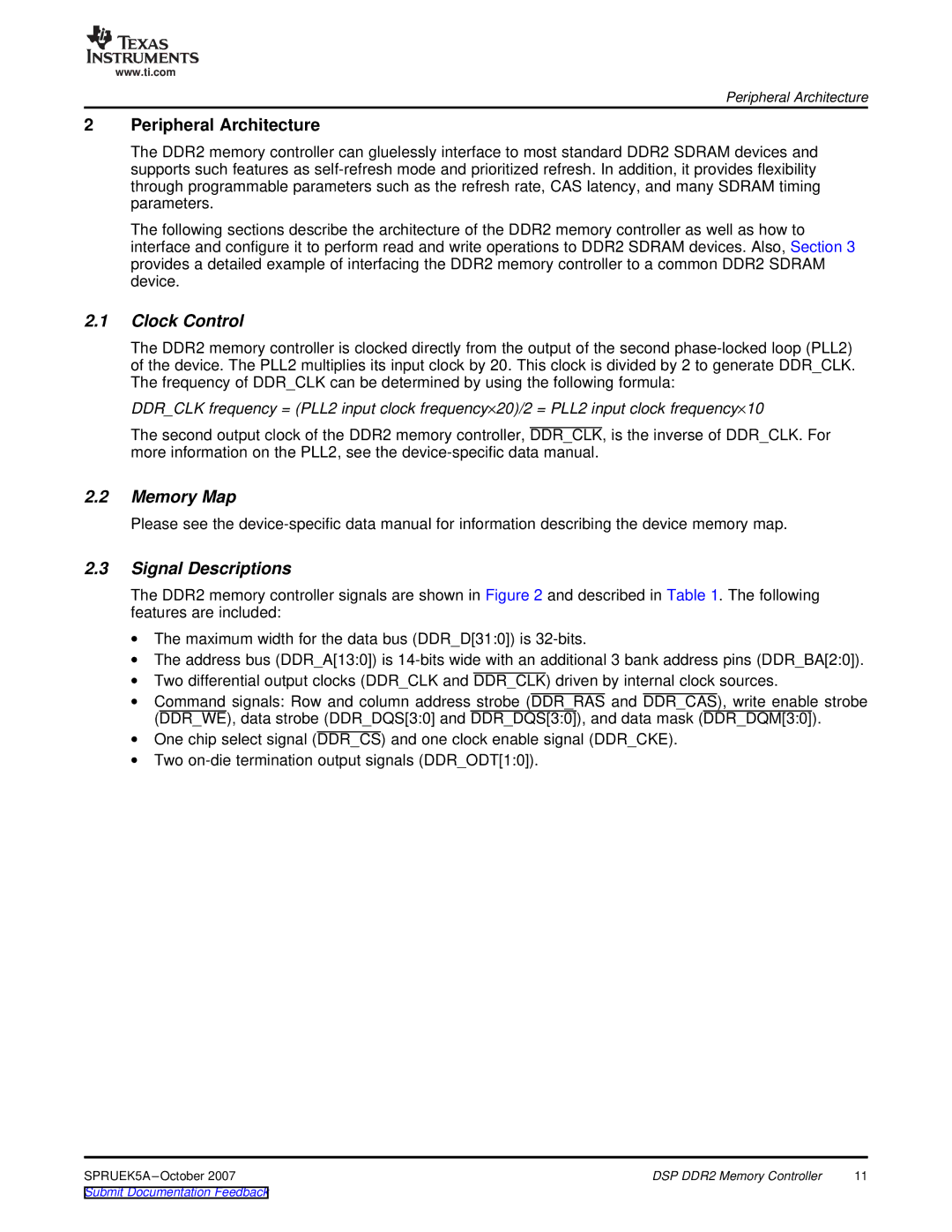
www.ti.com
Peripheral Architecture
2Peripheral Architecture
The DDR2 memory controller can gluelessly interface to most standard DDR2 SDRAM devices and supports such features as
The following sections describe the architecture of the DDR2 memory controller as well as how to interface and configure it to perform read and write operations to DDR2 SDRAM devices. Also, Section 3 provides a detailed example of interfacing the DDR2 memory controller to a common DDR2 SDRAM device.
2.1Clock Control
The DDR2 memory controller is clocked directly from the output of the second
DDR_CLK frequency = (PLL2 input clock frequency×20)/2 = PLL2 input clock frequency×10
The second output clock of the DDR2 memory controller, DDR_CLK, is the inverse of DDR_CLK. For more information on the PLL2, see the
2.2Memory Map
Please see the
2.3Signal Descriptions
The DDR2 memory controller signals are shown in Figure 2 and described in Table 1. The following features are included:
∙The maximum width for the data bus (DDR_D[31:0]) is
∙The address bus (DDR_A[13:0]) is
∙Two differential output clocks (DDR_CLK and DDR_CLK) driven by internal clock sources.
∙Command signals: Row and column address strobe (DDR_RAS and DDR_CAS), write enable strobe (DDR_WE), data strobe (DDR_DQS[3:0] and DDR_DQS[3:0]), and data mask (DDR_DQM[3:0]).
∙One chip select signal (DDR_CS) and one clock enable signal (DDR_CKE).
∙Two
SPRUEK5A | DSP DDR2 Memory Controller | 11 |
